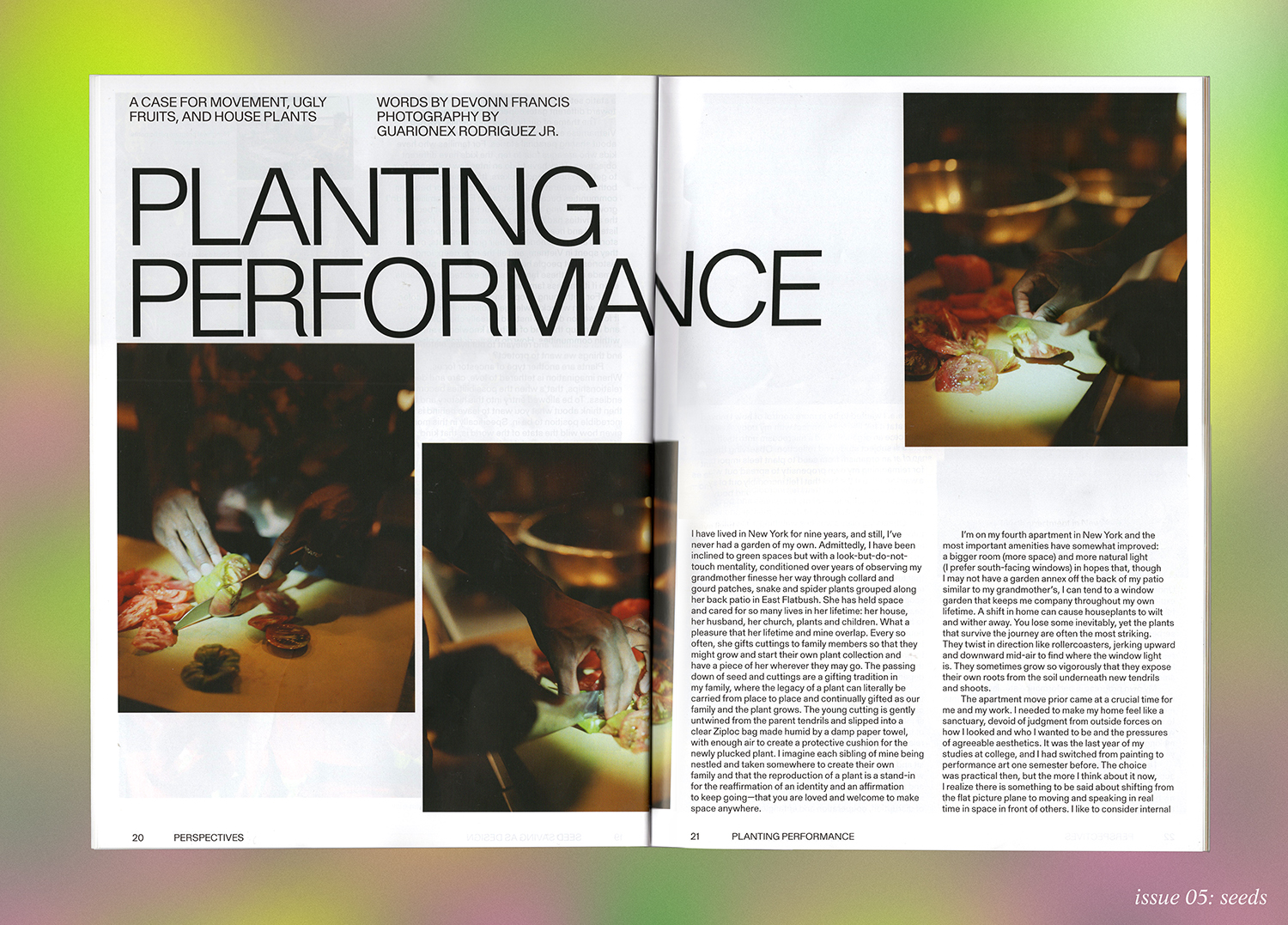Pre-order your copy of SEEDS, MOLD Magazine Issue 05 here for a pre-order price of $18USD. Expected ship date is March 22.
With the COVID-19 outbreak in New York City, we were alarmed by the seismic effect the quarantine had on our already food insecure city. The pandemic amplified systemic inequities in our current food supply chain and the failures of our globalized approach to feeding ourselves and our communities. Inspired by the rise of local mutual aid groups and the Little Free Library movement, MOLD commissioned seed libraries from our favorite New York designers and chefs with the hope that their approach might inspire others to freely share seeds and stories within their communities and beyond.
Artist Statement by Ladies & Gentlemen Studio
Photography by David Brandon Geeting for MOLD Magazine.
The library design came about while considering miniature architecture from across the world. In Mexico, Japan and other parts of Asia you can find shrines set up communally in public spaces for specific communities. They’re so endearing and charming but also sacred. Across the board, they highlight the emotive connections we have to shelter and its form. All over the world, giving something a shelter gives it importance.
Likewise, seeds are universally sacred because, with care, seeds can provide a food source indefinitely. Seeds provide intrinsic value to a community by creating a longterm connection between the people and the land—value that extends well beyond monetary figures. Much like a well-functioning piece of architecture that can house people for multiple generations, eating, harvesting and replanting seeds provides elemental infrastructure to humanity. It’s a cycle that takes effort, intention and cooperation across generations and social hierarchies, thereby connecting us all to our collective vitality. Like giving shelter to those we love, collecting and sharing seeds is an act of generosity.
When designing our seed shelter, we started looking more deeply at small architecture like Japanese tea houses, which are very specialized but simple, open and elemental. It’s a form that is graphic and easy to build—allowing people to build their own and even adapt the form as needed. Our shelter’s design is democratic with openings on four sides, which affords people the opportunity to be more active in the act of discovery when picking seeds as well as organizing them. To further articulate the four doors, we employed color coding inspired by Shaker villages, which elegantly use color to define different structures’ functions. Through this open format plan, we strived to provide flexibility to allow for interpretation and adaptation over time and location—in this way the seed shelter can become an ongoing part of the communal act of seed sharing.
















